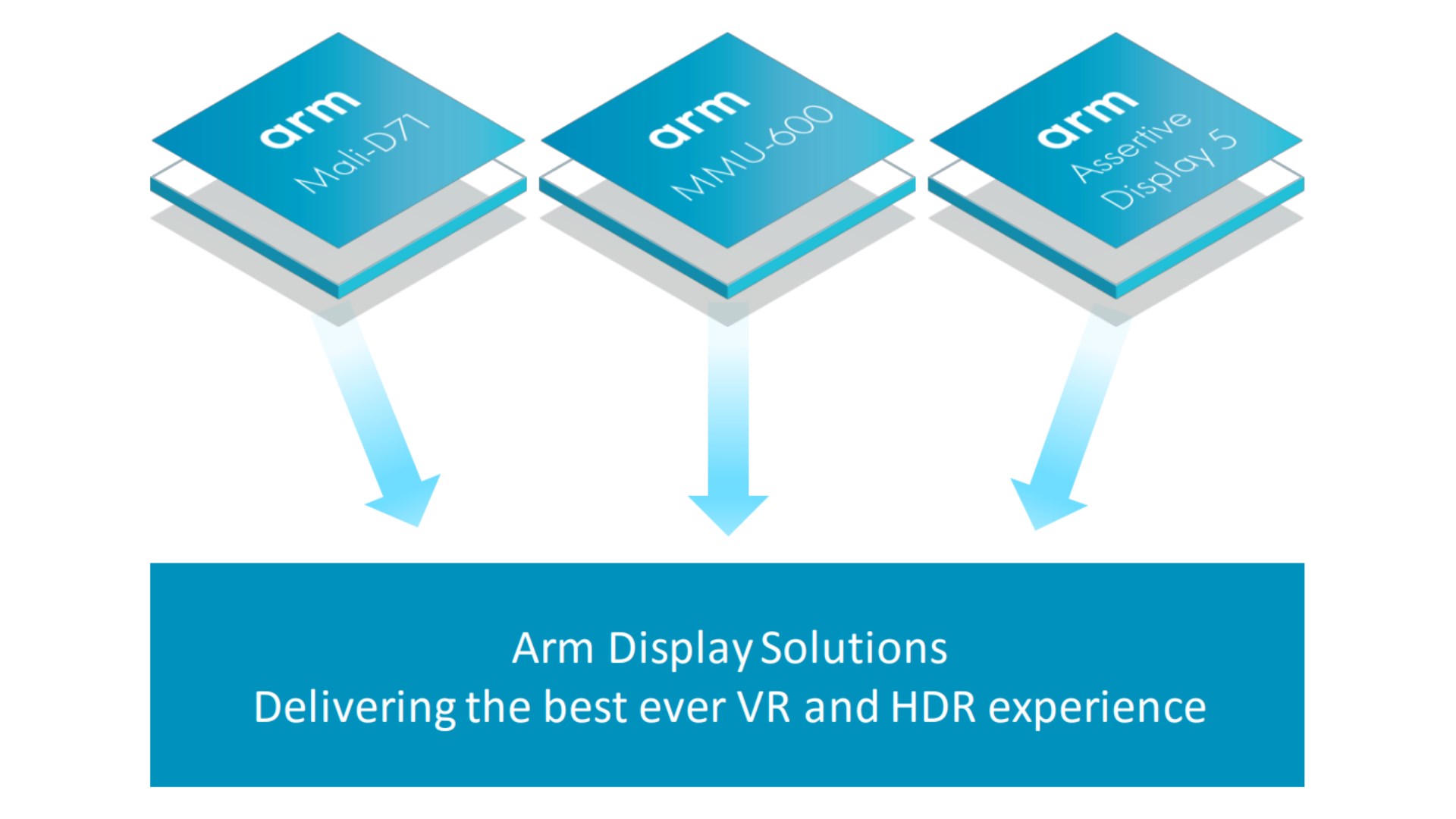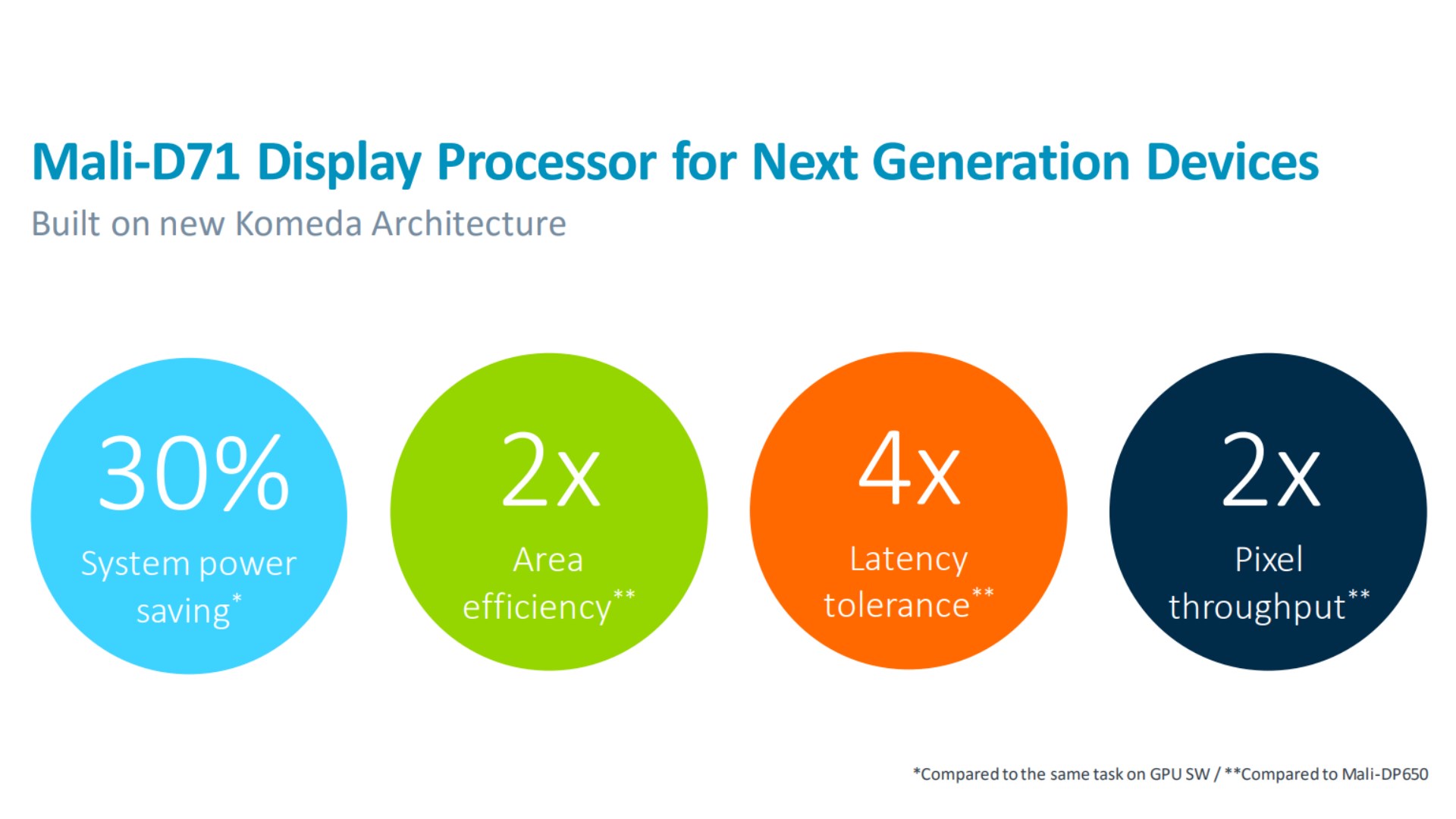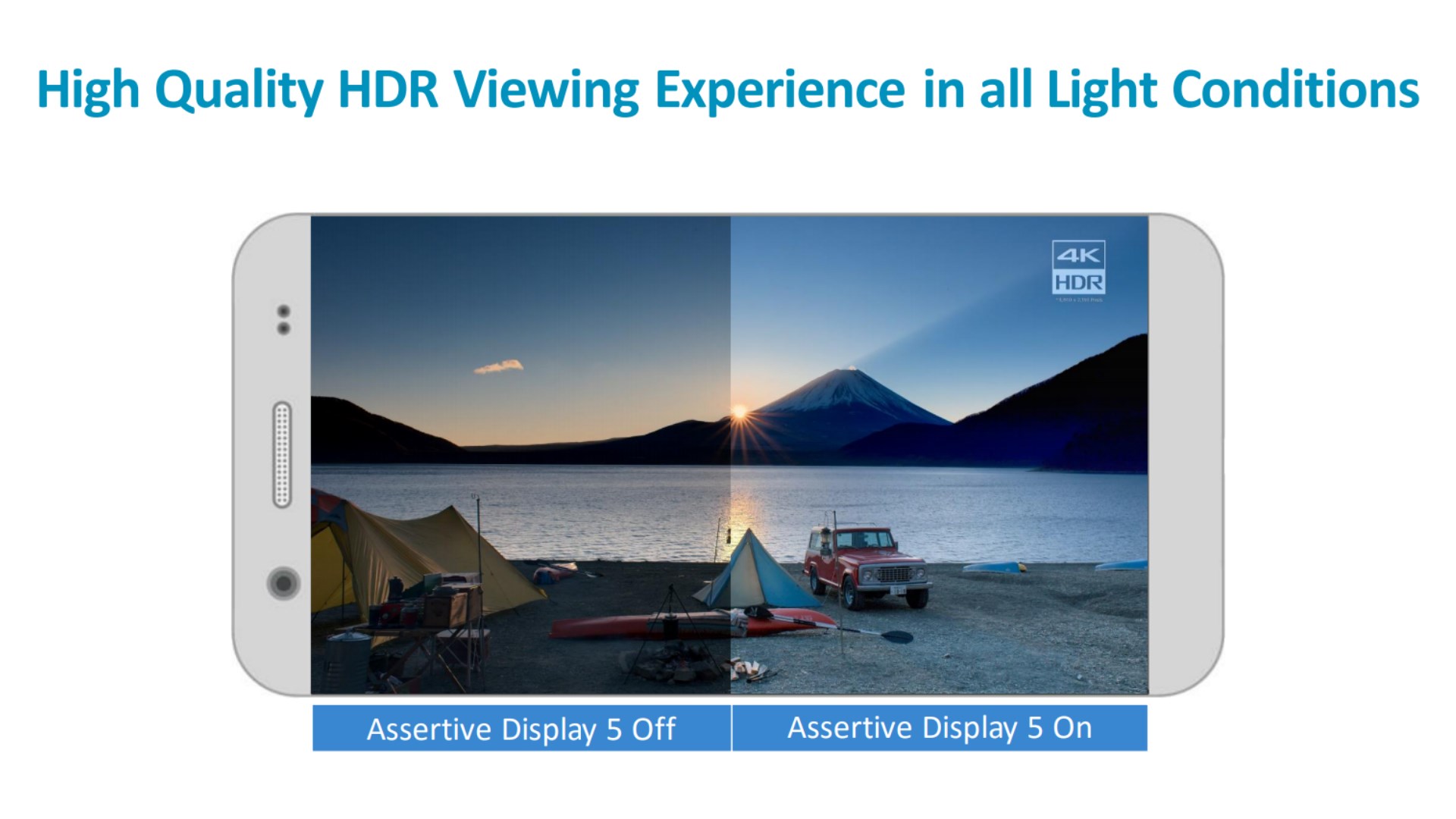Affiliate links on Android Authority may earn us a commission. Learn more.
Arm's new technologies make displays smarter and more efficient

Mali-D71 Display Processor
We first heard about Arm’s new display processor back in May when we received details of a new display processor code-named Cetus. Cetus, or the Mali-D71 as it is now known, works in conjunction with the GPU to take care of tasks like rotation, scaling, and image enhancement. Using a display processor for handling the last tasks before a frame is sent to the screen is more efficient then using the CPU or GPU.
The new Komeda architecture is optimized for 4K displays, at 120 frames per second. Compared to the Mali-DP650 (the previous generation display processor), the Mali-DP71 has double the area efficiency, four times the latency tolerance, and twice the pixel throughput. All of these are important when it comes to driving high resolution displays at higher frame rates for things like AR and VR.

The Mali-D71 is also specially optimized for Android, particularly for doing multi-window composition on Android 8.x Oreo. The Android optimized hardware reduces the load on the GPU and can handle up to 8 alpha blended layers, 8 rotated layers and 4 scaled layers, as well handling HDR/SDR mixed compositions.
Assertive Display 5
Assertive Display is Arm’s sunlight readability technology. When in bright sunlight the display on your phone will be pushed to its max to improve readability. However that will only achieve so much. Assertive Display adjusts each pixel in a frame and applies tone mapping based on how the display and the human eye work. By using both the screen brightness and the color of each individual pixel, Assertive display is able to increase viewability of the darker areas while keeping the already lighter areas from becoming washed-out.
One of the happy side effects of using Assertive Display is that the screen brightness can be reduced because the image processing is able to boost the effective contrast ratio. This means less battery drain.
The key feature of Assertive Display 5 is that it can show HDR content (HDR10 or HLG) to any display. This means you get a HDR-like experience even on a SDR display.

CoreLink MMU-600
Showing frames on a display is ultimately about handling large quantities of data in an efficient way. The new MMU can be built as a tightly integrated, specialized version for use with the Mali-D71. This coupling saves 55 percent of the space used by its predecessor.
Wrap-up
A lot that goes on in the background to ensure that what arrives on the display of our smartphones gets there in a timely manner, without killing the battery. That might sound obvious, but when you consider the challenges of processing the data headed for a 4K display at 120 frames per second then it is vital that every frame is delivered as “cheaply” as possible. If you watch a 4K movie for one hour at 120 FPS, the display processor will have to process nearly half a million frames. At these rates every energy saving, no matter how small, is essential. These three new bits of tech from Arm are designed to make sure that, regardless of which displays OEMs include on their smartphones in 2018 and 2019, the display driver and its friends will be able to handle it efficiently.